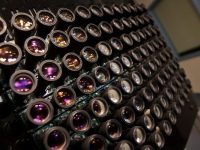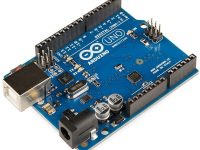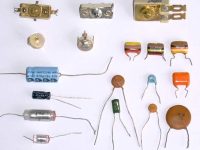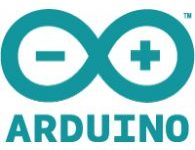Servo Motor
Contents
Introduction
Servo Motors are ordinary geared down DC Motors equipped with servo mechanism for precise control of angular position. A servomechanism or servo refers to an error sensing negative feedback which is used to correct the performance of a device. Servos are used for precise positioning in robotic arms, legs, RC Aeroplanes, Helicopters etc. Servo Motors do not rotate continuously, their rotation is limited between fixed angles. Usually these motors have rotation limit from 90° to 180° and some special have limit 360° or more.
An ordinary DC Motor rotates continuously when power is applied and the amount of torque the motor applies on its shaft is proportional to the current flowing through the motor windings. We can control its speed/torque by varying voltage across it (more voltage means more current). A servo motor is made by adding a potentiometer and control circuitry with a DC Motor.
Construction

The potentiometer is connected to the DC Motor in such a way that potentiometer turns when the motor shaft turns. Thus the controller circuitry can measure the voltage at the centre pin of the potentiometer and correct the shaft position. The controller circuitry compares the desired position (set by the user by Pulse Width Modulation) with current position (by reading voltage at the centre pin of potentiometer) of the motor to turn the motor in the direction that minimizes the error.

Servo Motors have usually three wires, Red and Black are used to given power and the third wire is used to give control signals. Red is used to provide DC Supply in the range of 4.8V to 6V. Voltage rating will be give as one of the specification by the manufacture. Black wire is to provide ground. For better efficiency, the supply voltage must be closer the operating voltage prescribed by the manufacture. This will reduce thermal losses. It is better to use a regulator for supplying power to increase the efficiency. Like ordinary DC Motors, reversing polarity does not reverse the rotation instead of it may damage the control circuitry. The colour of the third wire used to provide control signals may be yellow, brown, white etc varies for different manufactures.
Servo Motor Control

As I already said, servo motor shaft can be moved to desired position by using Pulse Width Modulated (PWM) signals on the Control Wire. The actual behaviour of a particular servo motor depends upon its manufacture. For example a pulse width varying from 1 millisecond to 2 millisecond can be send to a servo for about 50 to 100 times in a second. The Pulse Width determines the angular position.

In this example, a pulse of 1ms move the servo towards 0° while a 2ms pulse move the servo towards 180°. The angular positions for pulse width between 1ms and 2ms can be interpolated accordingly. These pulses should be send sequentially to retain servo in a particular angular position (eg: 50 times a second). The servo can retain a particular position until it receives next pulse.
Servo Motor should be selected according to our application. Typical specifications are speed, torque, weight, motor type, bearing type, dimensions, voltage and current ratings. Motor can be 3-pole or 5-pole, number of poles refers to the number of rotor electromagnets. 5-pole motor provides better torque than 3-pole motor.
Torque is the rotating force applied by the motor to turn the servo arm and Speed is the measure of how fast the servo can move to a particular position. Motors with better torque is preferred. The weight and dimensions of a motor is directly proportional to torque. Motors with more torque will have larger weight and dimensions. In almost all robotics applications weight have a crucial role, so motors must be chosen according to torque and speed requirements.












hi sir i have given a project to control the rotation of servo motor using 8051 uC…. which kind of servo i should use? i dont know about price and model?? plz give me some advice (as i already mentioned that i am using 8051 so it should be a small servo motor…am i right sir?)